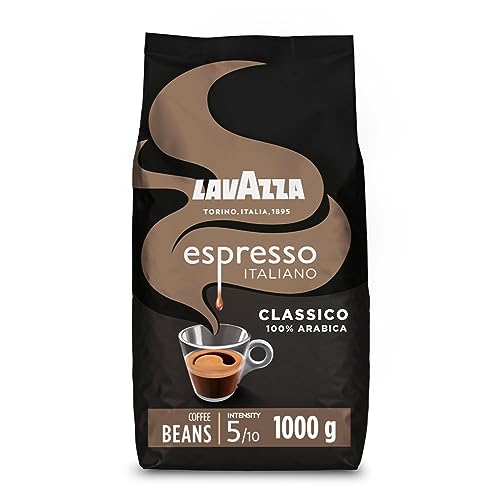Starbucks Coffee Beans 1kg
Before Peppermint Mocha and red holiday cups - Starbucks was a simple cafe in a rainy Seattle. The company's founders were focused on selling whole bean coffee but they didn't see the potential of espresso drinks.

Schultz changed everything. He was determined to show his roasting and blending skills.
Origin
Starbucks coffee beans have an extended, winding trip before they make it to your cup. Coffee is cultivated almost exclusively in the Coffee Belt. This area stretches across the globe between the Tropics Cancer and Capricorn. The climate, soil and culture of each region affects the taste of the beans. Starbucks sources its coffee beans from more than 30 countries.
Starbucks coffees are mainly made from Latin America, Africa and Asia-Pacific. These regions are famous for their full-flavor, balanced of acidity and weight. Starbucks also purchases coffee from St. Helena in the South Atlantic Ocean, a volcanic tropical island paradise.
The Starbucks's coffee beans are roast to perfection and give them a smooth and delicious taste. The coffee beans are ground into a fine powder which is ready to be brewed. The powder is then mixed with water, and put into the cup to make a delicious cup. The result is a cup that is full of flavor and energy.
Although the majority of Starbucks coffees are made from blends of different beans, there are many varieties of single-origin coffees available at the chain's stores. Single-origin Starbucks coffees come with various flavors, including fruity and chocolatey, sweet and nuanced. Certain single-origin beans are certified organic.
Starbucks's beans come from all over the world however, they must meet certain criteria to be considered specialty. The term "specialty coffee" was only introduced in the late 1980s, when roasters and cafes started experimenting with lighter roasting, manual methods and transparent sources. Starbucks hasn't started to source their coffee with these standards in mind, but it has since adopted a few of them.
Starbucks also works to improve the quality of life for the people who cultivate its coffee. It offers its coffee farmers a premium over the market value and helps to invest in their community. It also promotes sustainability and strives to reduce waste. This has led to the creation of new practices in coffee-growing and methods to safeguard the environment.
Roast
Starbucks roasts beans in large quantities and buys beans in large quantities. The roasting process can take between 10 to 15 minutes, and the result is beans are dark roasted. The beans that are dark roasted have a rich flavor and have a full body. The beans are ground up and then shipped to supermarkets and stores in the form of coffee grind. The coffee grind is bitter and is not ideal to make the perfect cup. Most people add lots of sugar cream or milk as well as flavorings and whipping cream to their coffee. This won't mask the bitterness in the coffee, but it will make the drink more appealing.
When the beans are first dropped into the roaster, they begin to steam due to their internal moisture. The "first crack" is a distinct sound that signals the start of the roasting process. At this point the sugars begin melt and the bound-up water escapes. In this stage the structure of the beans breaks down and the oils begin to migrate outward. At the end of this process, most coffees are deemed to be city roasts.
The roasted beans then cool and are separated from any stones or other impurities that have been removed from the roaster. Then they are checked by hand and then bagged to be sold. Some beans might have a dark spot known as a quaker. These beans did not change colour and consequently taste burned, this is a common circumstance and does not mean the coffee is bad but it could be a surprise in your cup of joe.
The beans are often roasted in small batches that can be as small as 20 pounds. They are referred to as "micro-lots". This is because every coffee will be roasted according to specifications set by the Starbucks team of masters of coffee. The team of experts in coffee creates unique profiles that are used by all Starbucks(r) roasting facilities across the globe. These profiles ensure that every cup of coffee is consistent and has a certain level of aroma, body and flavour.
Flavor
Starbucks purchases their beans from the farms they are sourced from to aid in improving quality and ensure an ethical source. For every one pound of coffee beans sold, Starbucks plant a tree. The beans themselves aren't branded to indicate where they originate from although some blends do - Veranda is from Sumatra, Komodo Dragon from Indonesian, and Anniversary is a blend of centeral american and african beans. The beans have a distinctive flavour profile and brew an elegant cup that has a delicate blend of sweetness and smoothness. Each sip reveals a symphony flavors that leave a pleasant taste on the palate.
Weight
The weight of starbucks coffee beans 1kg depends on the kind of blend. A Starbucks House Blend, for instance, weighs 14 oz per pound. A pound of Espresso-roast beans at Walmart, however weighs 16 ounces. This translates to an increase of 67% at Starbucks in comparison to Wal-Mart.
Starbucks' Pike Place Roast is named for the iconic Seattle market. The light-medium roasting provides sweetness, balance and a silky smoothness to every cup. Made using beans from Latin America, this blend is ideal for Americano and espresso. buy 1kg coffee beans is packaged in a FlavorLock packaging to preserve and protect the flavor. This is Starbucks their signature coffee. This is a great choice for coffee lovers! Made of 100% Arabica beans. An ideal gift idea for all Starbucks customers.
